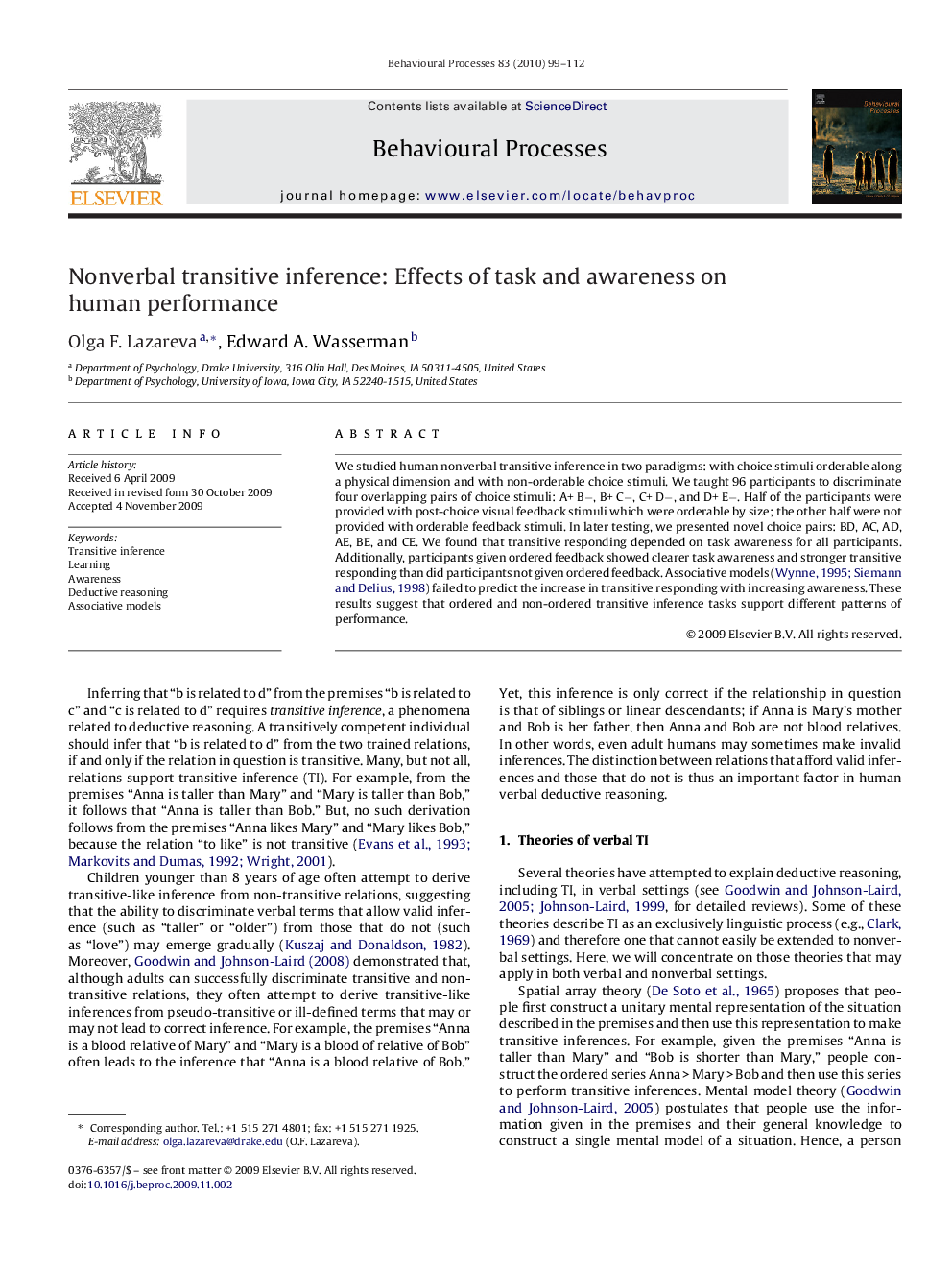| Article ID | Journal | Published Year | Pages | File Type |
|---|---|---|---|---|
| 2427270 | Behavioural Processes | 2010 | 14 Pages |
We studied human nonverbal transitive inference in two paradigms: with choice stimuli orderable along a physical dimension and with non-orderable choice stimuli. We taught 96 participants to discriminate four overlapping pairs of choice stimuli: A+ B−, B+ C−, C+ D−, and D+ E−. Half of the participants were provided with post-choice visual feedback stimuli which were orderable by size; the other half were not provided with orderable feedback stimuli. In later testing, we presented novel choice pairs: BD, AC, AD, AE, BE, and CE. We found that transitive responding depended on task awareness for all participants. Additionally, participants given ordered feedback showed clearer task awareness and stronger transitive responding than did participants not given ordered feedback. Associative models (Wynne, 1995 and Siemann and Delius, 1998) failed to predict the increase in transitive responding with increasing awareness. These results suggest that ordered and non-ordered transitive inference tasks support different patterns of performance.
